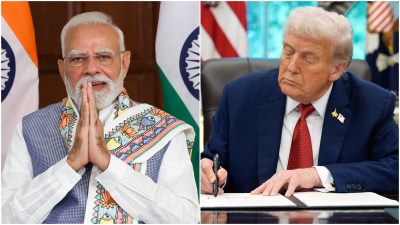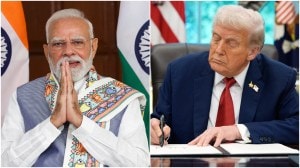Monsoon: it’s raining bad news for whole of this week
A weather forecast for the next ten days, all the way from the USA: Dry skies over most parts of northern India. Possibility of rain only af...

A weather forecast for the next ten days, all the way from the USA: Dry skies over most parts of northern India. Possibility of rain only after July 22. But the rain will be 25 % of the average rainfall over a 30-year benchmark period. In short, gloomy weather is looming large.
The US-based Centre for Ocean-Land-Atmosphere Studies (COLA), in its 10-day short-term forecast beginning July 12, predicted a continued dry spell over New Delhi, Haryana, Punjab, western Uttar Pradesh, the northern parts of Madhya Pradesh and northern Saurashtra till July 22.
And when the monsoon finally gets its act together, says COLA, these regions may receive maximum rainfall of upto only 2 mm, which is 25 % of the average rainfall received between 1960 and 1990.
COLA is an arm of the Institute of Global Environment and Society, based in Maryland in the US.
There’s reason to start worrying over the bright blue skies and high temperatures. The cumulative average rainfall over the country till date has been 15 % below normal — 224.8 mm. According to the India Meteorological Department (IMD), the monsoon’s progress has been halted since the last week of June. The skies still haven’t opened up over Punjab, Haryana and parts of Rajasthan.
According to the IMD, as many as 20 of 36 meteorological sub-divisions in the country have received deficient rain. The corresponding figure last year: only 11.
Only 10 sub-divisions received normal rain compared to 16 during the same period last year. Six sub-divisions received excess rain compared to nine in the same period last year.
According to the COLA study:
• Till July 22, the maximum rainfall will be in Orissa, West Bengal, Jharkhand, Bihar, Chhattisgarh, parts of eastern UP, coastal Andhra Pradesh, parts of Telangana and coastal Tamil Nadu.
• Uttar Pradesh, Uttaranchal, Jammu and Kashmir, Himachal Pradesh, Punjab, Haryana, Rajasthan, northern Gujarat and central Maharashtra will receive the least rainfall amounting to 25per cent of the period between 1960 and 1990.
• The eastern parts of peninsular India will get 50 per cent of the rainfall received in the 30-year benchmark; 75 per cent of this rainfall will be experienced in the strip extending over the central peninsula, Vindhyas and eastern Uttar Pradesh.
• Between July 12-17, temperatures over UP, Haryana, Punjab and northern Rajasthan will be 35
degrees centigrade and above.
• In parts of Rajasthan, northern MP, eastern UP, parts of coastal Andhra Pradesh and off the eastern coast, temperatures will be 30 degrees centigrade and above.
• On the western coast and in the North-east, except for Arunachal Pradesh, temperatures will range between 15-20 degrees centigrade.
In the rest of the country, temperatures will range between 20-25 degrees centigrade.
This low rainfall and high temperatures, says the study, will cause acute soil moisture stress conditions in major parts of the country.
The water in two metres of the top soil before July 12 ranged between 20-85 centimetres all over the country. The study predicts that
acute soil moisture will practically be reduced to the zero level all over peninsular India, except Andhra Pradesh.
The story will be repeated in northeast India, Saurashtra, Rajasthan, Jammu & Kashmir and other parts of north-west India.
In north Gujarat, and parts of MP, soil moisture will be -1 centimetre while in western UP the soil temperature will be within -2 centimetre.
If there’s any silver lining, it is that in Punjab and parts of Haryana, Andhra Pradesh, Chhattisgarh, eastern MP, eastern UP, Bihar, Jharkhand and West Bengal, soil moisture will range between one to eight centimetres.




- 01
- 02
- 03
- 04
- 05


























